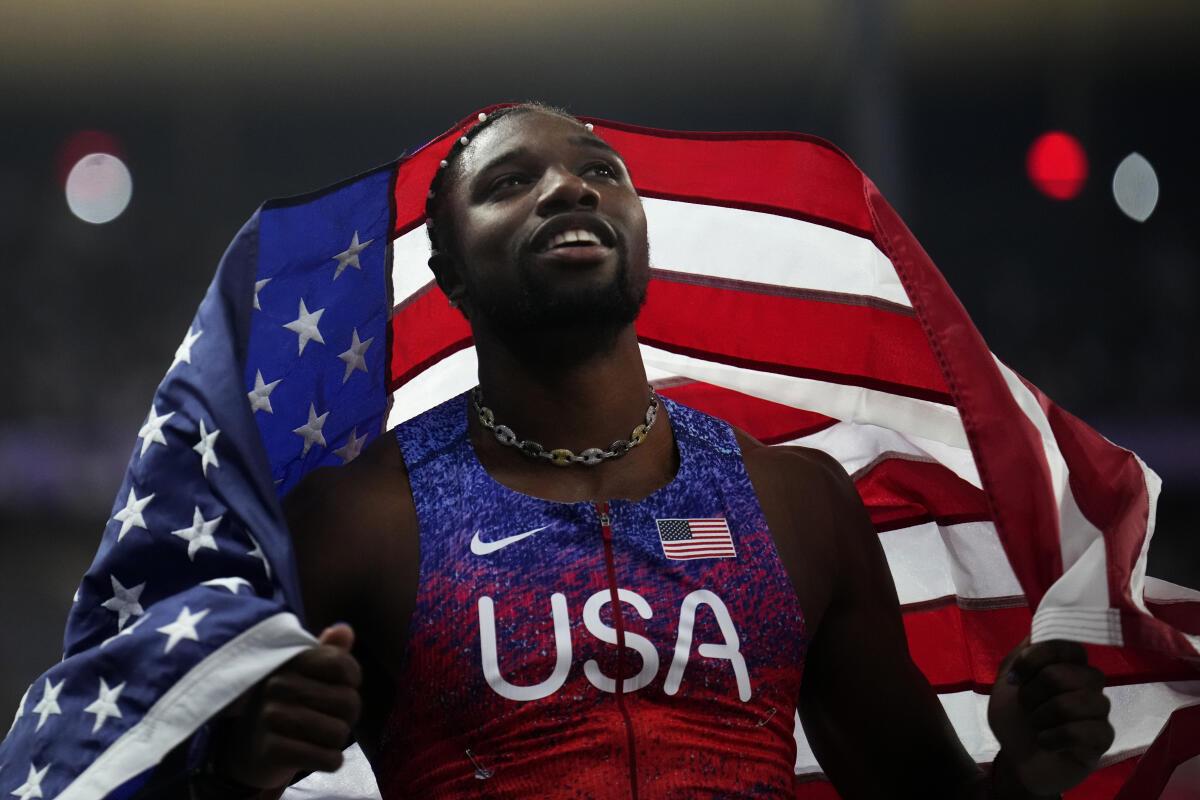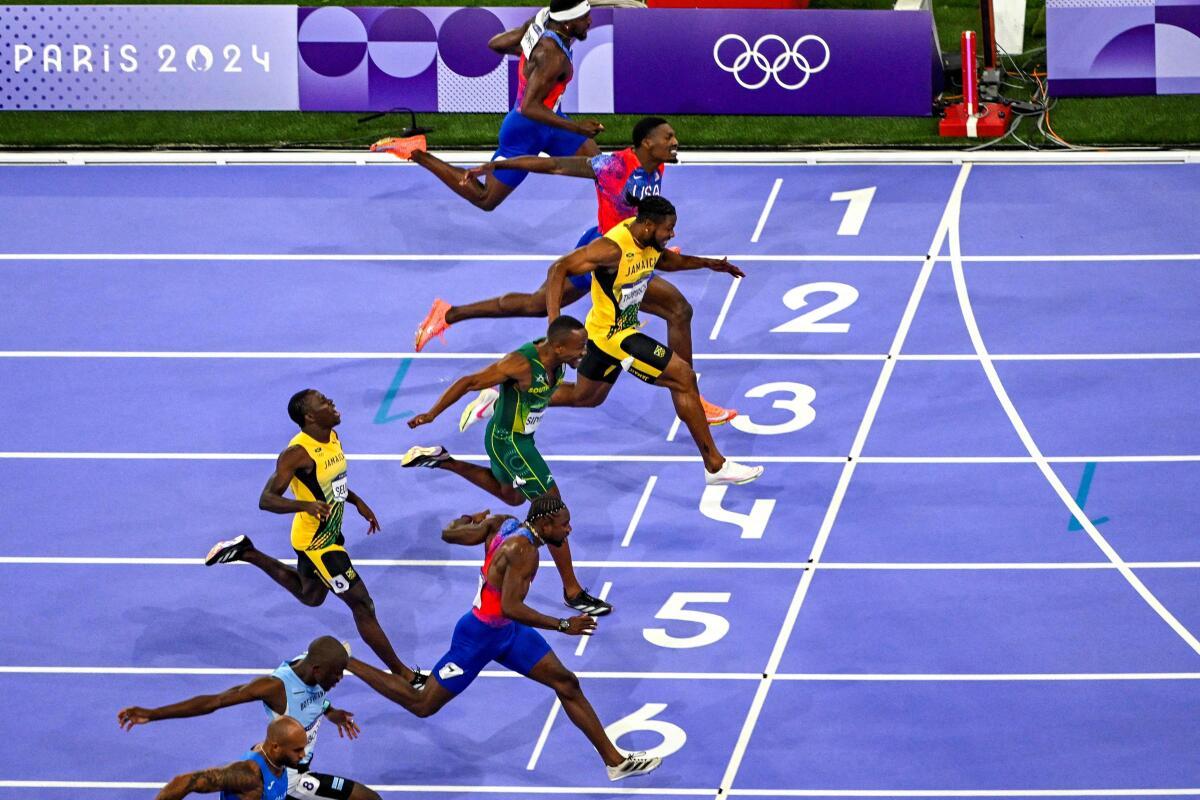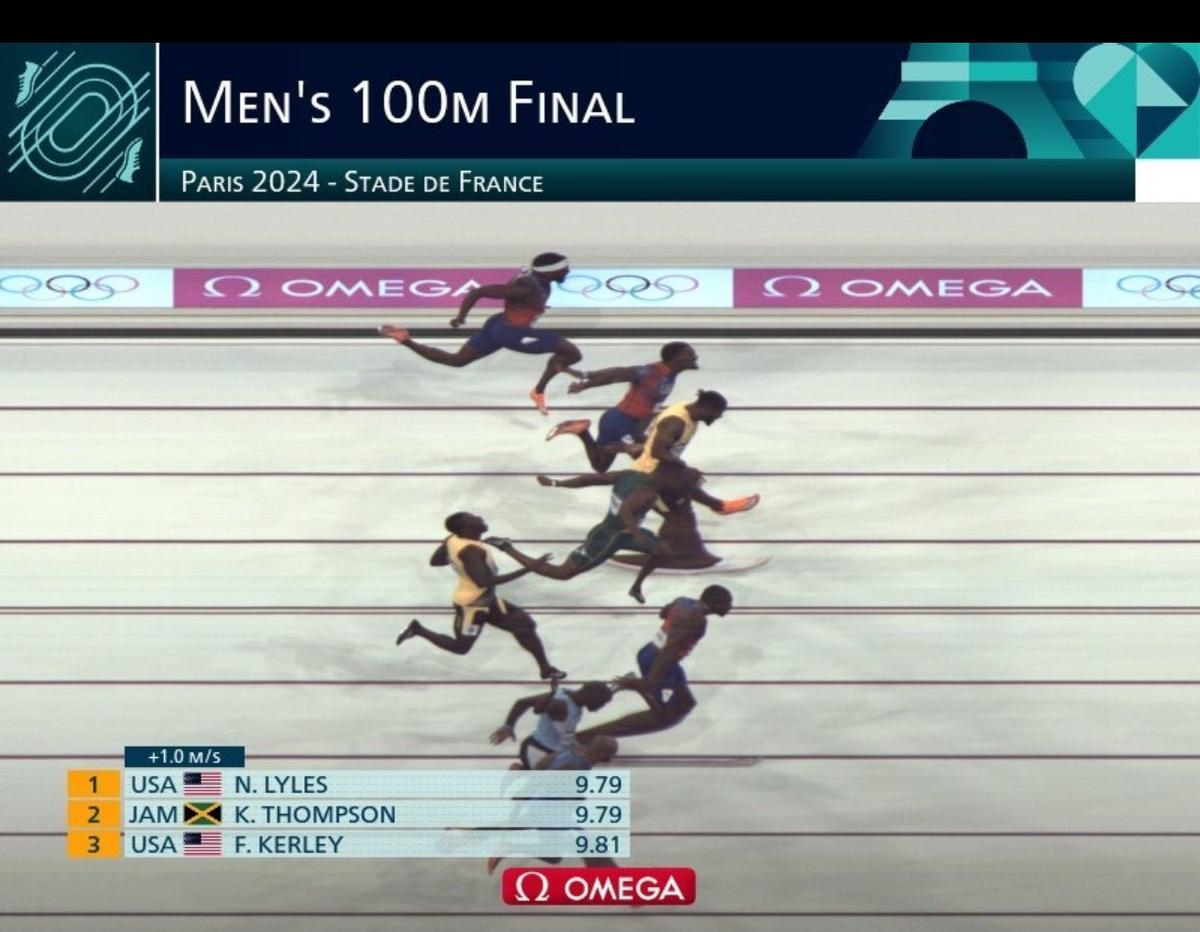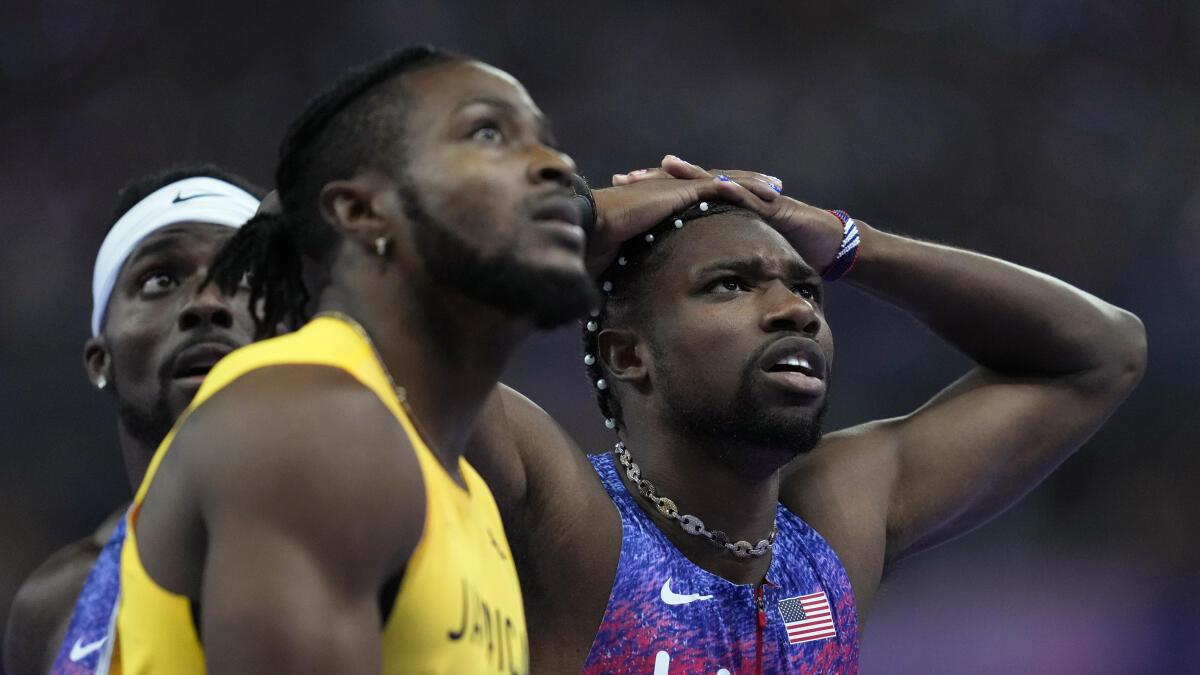Noah Lyles or Kishane Thompson: Athletics photo finish rules explained – Paris 2024 Olympics 100m final analysis
World champion Noah Lyles roared to victory in 9.79sec to claim gold in a dramatic men’s Olympic 100m final in Paris on Sunday.
Lyles won in the closest Olympic 100m finish in modern history as just five thousandths of a second separated him from Jamaica’s Kishane Thompson.
Both were given the rounded-up time of 9.79sec but the American’s name carried the all-important (.784) to Thompson’s (.789.)
Spectators and the athletes themselves were stunned with the result with Thompson having led majority of the race. The photo finish image appears to show Thompson’s leg ahead of the the finish line further than Lyles. So how then did Lyles take the gold?

Here’s a breakdown of the simple rules of a photo finish in athletics.
How does World Athletics – the body governing international athletics – explain a photo finish?
As the runners approach the finish line, a “slit-video” system scans an ultra-thin segment of the track precisely aligned with the finish line — scans it 2,000 times per second, providing an unbroken image of each athlete crossing the line — and coordinates it with the athlete’s time.
In addition to that, there’s a back-up camera on the other side of the field in case a runner is hidden or blocked by another runner.

The flash timer that clocks the final times of athletes has a margin of error which at worse can throw up an error within 0.01 or 0.02 of the official time.
Now the most important part to determine the official timing which in turn decides the race is the body part that has to cross the finish line.

In the 100m final in the Paris Olympics, Thompson’s foot looks like it breached first. But the body part that has to cross the finish line for an official registration of timing is the torso of the athlete. The torso or the trunk of a person includes the chest, abdomen, pelvis, and the back.


